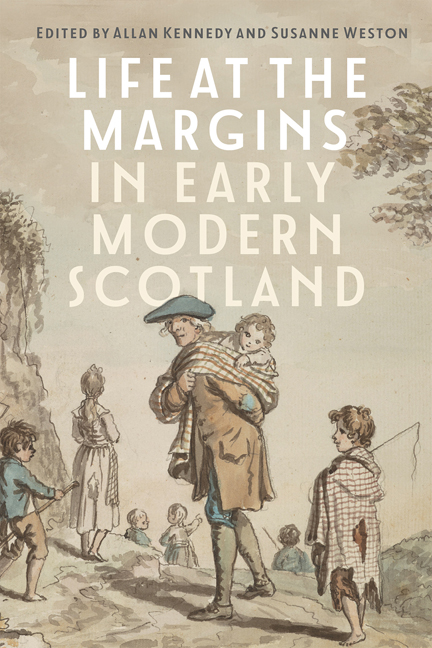Afterword
Published online by Cambridge University Press: 08 May 2024
Summary
Understanding life at the margins matters. It matters in part because the very delineation of ‘mainstream’ as against ‘marginal’ tells us a great deal about a given society's self-perception and dominant value-systems. Similarly, reconstructing the mechanisms used to police these borders offers significant insights into the nature of power and the ordering structures underpinning it. More importantly, however, we should heed the central lesson emerging from the growth of ‘history from below’: ordinary people, including those living at the margins, matter quite simply because they were, and are, part of their community. If we overlook their experiences by constantly diverting our attention towards noisier, showier elites, then we cannot hope to achieve a full or comprehensive understanding of past societies. The margins are part of the picture, and they demand our attention for that reason.
The essays in this collection have suggested a number of recurring dynamics in the experience of social marginality in early modern Scotland. The first of these is the challenge of observable difference. Whenever a group or individual was visibly distinctive, suspicion and unease tended to accompany them, particularly when that variation was of a kind that challenged accepted social standards or expectations. In this volume, we have seen such dynamics emerge from Holmes’ study of disability, Tyson's work on the Romani, Lee's analysis of enslaved Black children, and Kennedy's discussion of itinerants. Something similar, moreover, emerges from Doak's work on executioners, another group that was very publicly singled out, albeit by their work rather than their identities, and from Hall's discussion of the consequences of behavioural irregularity. In none of these cases was the handicap of visible difference necessarily insurmountable; other considerations or pressures often mitigated it. Nonetheless, it is clear that people pushed to the margins of early modern society in Scotland often ended up in this position because of the anxiety and discomfort with which visible difference was instinctively met.
Legal disadvantage is an equally prominent recurring theme. As Tyson and Kennedy remind us, the marginalised position of itinerants and migrants was enshrined and reinforced through legislation and regulation, much of it designed to quarantine the ‘other’. Allen and Weston have shown that the world of work was heavily regulated, ensuring that those labouring on the ‘wrong’ side of the divide faced not just stigma, but active legal disadvantage, up to and including criminal prosecution.
- Type
- Chapter
- Information
- Life at the Margins in Early Modern Scotland , pp. 210 - 214Publisher: Boydell & BrewerPrint publication year: 2024

